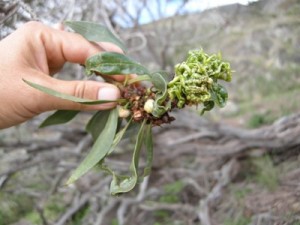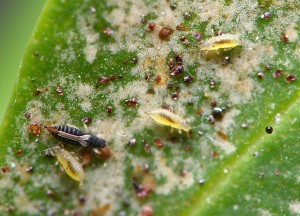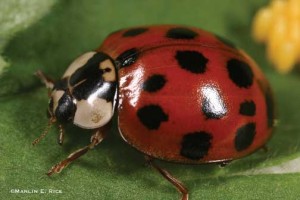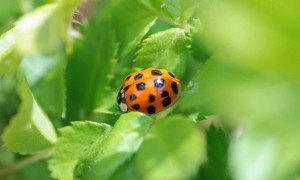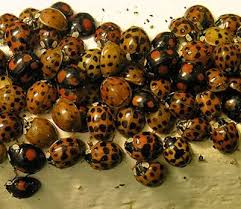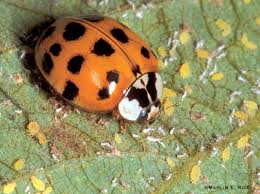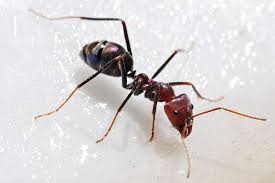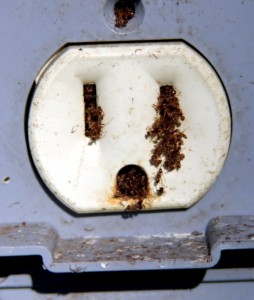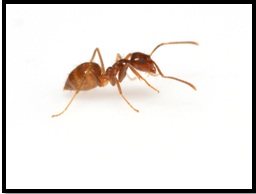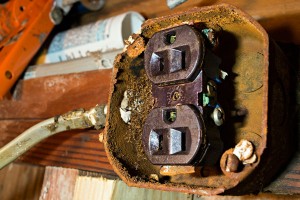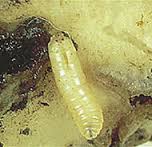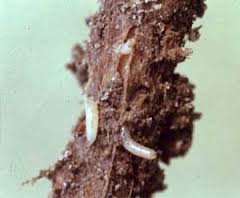Beetles are the largest group of insects belonging to the order ‘Coleoptera’ which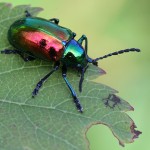 means ‘sheathed wings’. They can be found nearly in all climates and latitudes except in extreme environment as those in the polar region. About 40% of all insect species are beetles while most of them are undiscovered.
means ‘sheathed wings’. They can be found nearly in all climates and latitudes except in extreme environment as those in the polar region. About 40% of all insect species are beetles while most of them are undiscovered.
The majority of beetles feed on a variety of plants. They may feed on leaves, stems, flowers, fruits, vegetables, and roots. Any part of the plant is food to them. They also feed on stored crops and grains. These pest attack on furniture and items made of wood. Hence they are considered as pests causing damage to our plants in fields, yards, gardens, storage areas etc.
The most destructive species of beetles are:
- Carpet Beetles: feeds on plant matter with high proteins.
- Drugstore Beetles: feeds on stored grains, seeds, flour, spices, books, leather, and drugs.
- Grain Beetles: feeds on grains, cereal, seeds, dried fruit, and food with higher oil content.
- Ground Beetles: certain ground beetle species feeds on seeds and pollen of plants.
- Plaster Beetles: sometimes feeds on stored food products.
- Powder Post Beetles: feeds on starch, sugar, and protein from sapwood, prefers wood with high moisture content.
- Spider Beetles: feeds on almonds, beans, cereals, chocolate powders, cornmeal, dates, dried fruits, mushrooms, dried soups, flour, ginger, corn, nutmeg, older woods, rye bread, seeds, etc.
- Warehouse Beetles: feeds on nectars and pollens and also cereals, seeds, cornmeal, dried pet food, spices, pasta noodles, cookies, candy, and milk powder.
- Wood Infesting Beetles: feeds on wood-containing moisture and sugar.
- Mountain Pine Beetles: feeds on mature or weakened lodgepole pine.
Let us look at the below evidence that shows how beetles are destroying our plants and trees:
- Beetle spreads worry among Ventura County farmers
By Claudia Boyd-Barrett, vcstar.com, 15 January 2016, California, US
Known as the polyphagous shot hole borer, the pest is a beetle that targets at least 38 types of trees, including avocados. It carries a fungus that interrupts the transportation of water and nutrients within the trees, leading to branch dieback and ultimately death.
The conservancy manages about 2,300 acres of land that is home to tens of thousands of oak trees.
Rick Bisaccia, stewardship director and lands manager for the Ojai Valley Land Conservancy, said “Live oaks are probably the most predominant trees on our land,” he said. “If all of a sudden the oaks were to die and disappear out of there it would be a real, tragic loss.”
- N.Y. Wants Help Fighting Southern Pine Beetle
By Kevin Lessmiller, 7 January 2016, Courthouse News Service, New York, US
(CN) – New York’s natural resources division said Thursday that it is taking bids for timber harvesters to help combat an invasive species of beetles.
Tree-cutting operations began as part of the response plan, resulting in nearly 2,500 infested trees being chopped down, according to the agency. However, its efforts have not been enough. DEC says there are still forested areas threatened by the southern pine beetle.
“By thinning a portion of this forest, which represents one of DEC’s largest land holdings in the Pine Barrens region, we are potentially saving thousands of trees from this invasive insect,” Seggos said in a statement.
The southern pine beetle is native to southern areas of the United States, but the species has spread north and west. It attacks all types of pine trees, and about 1,000 acres of pine forests in New Jersey have been destroyed by the beetle each year since 2001, according to DEC.
- Tel Aviv fears invasive beetle infestation that causes trees to collapse
22 December 2015, The Jerusalem Post, Tel Aviv, Israel
Due to heightening fears that the ongoing spread of red palm weevil infestations will lead to spontaneous tree collapses around the city, the Tel Aviv-Yafo municipality is demanding that private homeowners take certain measures to handle infected palms on their property.
The municipality announced that if property owners fail to treat their trees within 14 days, they will be subject to a NIS 730 fine. About 270,940 trees of all types grow in Tel Aviv, of which about 160,940 are found in public spaces, according to city data. Stressing the importance of urban plant growth to residential quality of life, as well as the millions of shekels invested in their preservation, the city urged residents to be proactive and protect the palm trees from the red palm weevil’s clutches.
- Pine bark beetles infest trees on the Palos Verdes Peninsula
By Priscella Vega, 19 December 2015, Daily Breeze, California, US
Rolling Hills Estates in Peninsula removed more pine trees than any other species compared to past years, according to Andy Clark, community services director. The city held a special Parks and Activities meeting last week to address recent attacks on trees and hear Dudikoff’s concerns of bark beetles spreading to his area.
In Rancho Palos Verdes and Rolling Hills, infected trees haven’t been a major concern. Residents typically remove infected trees to prevent beetles from spreading while Rancho Palos Verdes residents are concerned about dead trees falling over.
- Oro-Medonte battles beetle
By Frank Matys, 18 December, 2015, Ontario, Canada
Oro-Medonte is tackling an infestation of emerald ash borer, a bug responsible for the devastation of millions of trees in Ontario.
However, targeting an area of the township populated with ash trees will not halt the beetle’s march through the municipality, an official says.
“It certainly will spread,” said Jerry Ball, director of transportation and environmental services.
“Once a tree dies, you stand the risk of it blowing down across a road or taking out hydro lines or falling down on private property, maybe on a house or whatever,” Ball said.
Let us look at the statistics that shows the increasing beetle infestation:
- The U.S. Forest Service and Colorado State Forest Service
The annual aerial forest health survey in Colorado, 2015
A spruce beetle outbreak was detected on 485,000 acres in 2014, compared to 398,000 acres across the state in 2013. The epidemic expanded to 253,000 new acres, as compared to 216,000 new acres in 2013. The spruce beetle epidemic is expanding most rapidly in southwestern Colorado’s forests, and the total area affected by this beetle since 1996 has increased to almost 1.4 million acres statewide.
Approximately 3.4 million acres in Colorado have been affected by mountain pine beetle since the first signs of the outbreak in 1996.
- The British Columbia Ministry of Forests, Land and Natural Resource Operations
Sustainable Forest Management, Facts and Statistics 2013
Since 2002, an unprecedented infestation of mountain pine beetle in British Columbia has significantly threatened Alberta’s pine forests. The British Columbia Ministry of Forests, Land and Natural Resource Operations projected that 57% of the province‘s merchantable pine forests could be killed by 2016.
- Below image shows increasing mountain pine beetle infestation in Canada, US region in the year 2013:
- Farmers’ knowledge and perceptions of blister beetles, Hycleus spp. (Coleoptera: Meloidae), as pest herbivores of Desmodium legumes in western Kenya
International Journal of Pest Management, 2012
The highest number of farmers reported blister beetles as pests of desmodium (63%) and beans (58%), followed by sweet potato (51%).
Insecticides and pesticides are designed to kill pests. Because of their mode of action is not specific to one species, they often kill or harm organisms other than pests, including humans. Also the majority beetle species are directly important to the environment. For example, several beetle species are predators on other harmful pests; others are decomposers of organic matter. Here is the evidence that shows adverse effect of pesticides:
- New evidence of damage caused to bees by pesticide use, researchers claim
By wmnpbowern, January 05, 2016, Western Morning News, England
Scientists at Sussex University claim new research shows the impact on bees of neonicotinoid pesticides is even greater than originally feared.
The researchers, at Sussex University, say they have discovered that bees are exposed to a chemical cocktail when feeding on wildflowers growing next to neonicotinoid-treated crops in UK cropland.
C Tech Corporation can offer a solution to overcome the damage caused by beetles and other insects to our plants, trees, and crops. Termirepel™ is an ideal solution for the prevention of damage caused by insects. Termirepel™ is the non-toxic and non-hazardous anti termite and anti insect additive. Although it is non-hazardous anti termite it is effective on insects like beetles, grasshopper, worms, bedbugs etc. It is cost effective and cost efficient, inert, stable upto 1400 deg C temperature and long lasting.
Termirepel™ is manufactured with a unique set of complex compounds. It is available in the form of polymer masterbatches which can be incorporated in agricultural films, mulches, etc during processing. Termirepel™ can also be incorporated in silage bags and packaging films to protect the crops in post-harvest stage from pest damage.


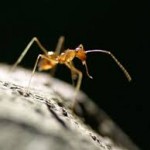
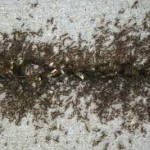
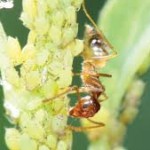



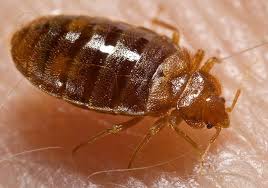
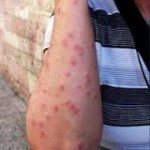
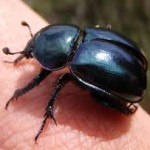
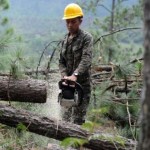
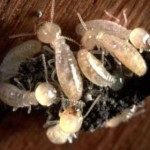
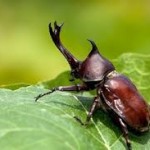
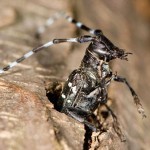


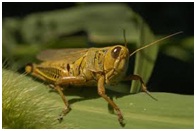

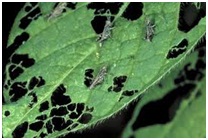
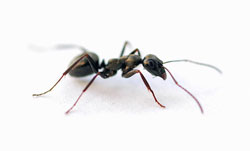
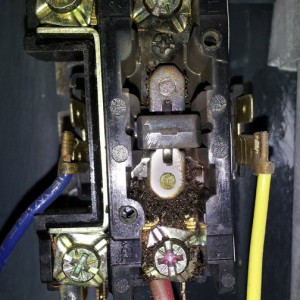
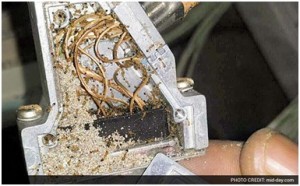
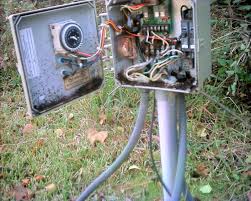
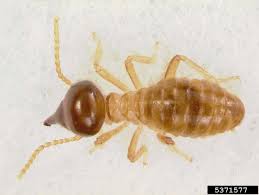
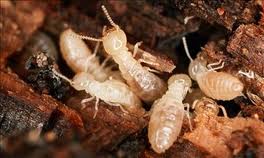

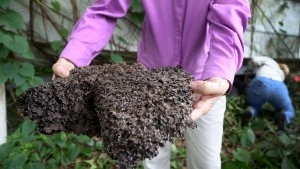
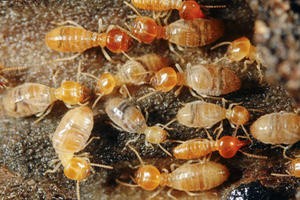

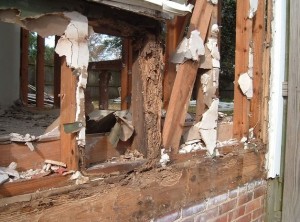
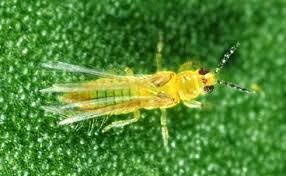 animals by puncturing them and sucking up the contents. Some species of thrips feed on other insects or mites and are considered beneficial, while some feed on fungal spores or pollen. More than 6,000 species of thrips are known around the world, with over 300 of these in Europe and only around 150 natives to Britain. Thrips are small hemimetabolic insects with a distinctive cigar-shaped bauplan. They are elongated with transversely constricted bodies. They range in size from 0.5 to 14 millimeters (0.020 to 0.551 in) in length for the larger predatory thrips, but most thrips are about 1 mm in length.
animals by puncturing them and sucking up the contents. Some species of thrips feed on other insects or mites and are considered beneficial, while some feed on fungal spores or pollen. More than 6,000 species of thrips are known around the world, with over 300 of these in Europe and only around 150 natives to Britain. Thrips are small hemimetabolic insects with a distinctive cigar-shaped bauplan. They are elongated with transversely constricted bodies. They range in size from 0.5 to 14 millimeters (0.020 to 0.551 in) in length for the larger predatory thrips, but most thrips are about 1 mm in length.